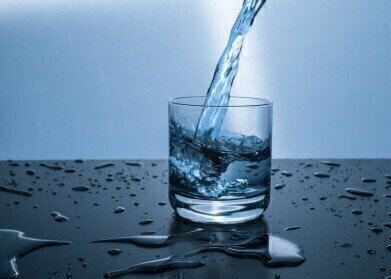Water/Wastewater
Does Hydraulic Fracturing Affect Drinking Water?
Jun 25 2015
Hydraulic fracturing, or fracking, is a method that has been used the last decade to produce cheaper gas and oil. But hydraulic fracturing has its critics, especially when environmental considerations are taken into account — and contamination of natural water resources is one of the key environmental concerns. (Another concern is increased air pollution as discussed in ths article: The Influence of Oil and Gas Emissions On Ambient Non-Methane Hydrocarbons In Residential Areas.)
Organisations like the US Environmental Protection Agency (EPA) have taken an interest in the hydraulic fracturing process at all stages — and a recent EPA study and has attempted to address some of the environmental concerns around drinking water. Take a closer look at the issue and see what the EPA have found.
Water, water, everywhere — nor any drop to drink
Water is key to life on Earth and is a finite resource we all need each day in a clean, drinkable form. The draft EPA report, Assessment of the Potential Impacts of Hydraulic Fracturing for Oil and Gas on Drinking Water Resources, was a result of the US government asking the EPA to study the link between hydraulic fracturing and drinking water due to growing environmental concerns.
The EPA study used scientific literature, field studies, and laboratory analysis and toxicology assessments to evaluate the potential risk hydraulic fracturing could change the quality and quantity of available drinking water now and in the future. The use of water in hydraulic fracturing can best be considered as a water cycle — and this is how the EPA proceeded.
The water cycle
There are five stages to the hydraulic fracturing water cycle and the EPA report considered the potential impact on drinking water from each of the stages:
- Water acquisition — hydraulic fracturing requires large volumes of water to open the rock fissures and release the oil and gas.
- Making the fracking mix — chemicals are added to the water to aid the process.
- Injecting the water-mix into the well and rock — this process forces open the fissures allowing the gas and oil to escape. In a poorly constructed well the water used may ‘escape’ and contaminate groundwater or aquifers.
- Flowback of well-water — after the fissures are opened, the water-mix flows back up the well.
- Wastewater treatment/disposal — large volumes of contaminated water to treat or dispose of.
Safe to drink?
The draft report finds that although there has been no widespread or systemic impacts on drinking water resources — there have been some instances of contamination of drinking water wells both during routine operation and due to accidents. Discharges and spills of wastewater have impacted on surface and ground water resources — and in some cases fracturing fluids have been injected into drinking water resources.
The frequency of the impacts on drinking water resources could not be determined due to several factors — but some people would argue that one impact is too many.
Is it a price the UK will pay for cheap fuel?
Events
May 05 2024 Seville, Spain
May 13 2024 Munich, Germany
May 23 2024 Beijing, China
May 23 2024 Beijing, China
Jun 10 2024 Algiers, Algeria













